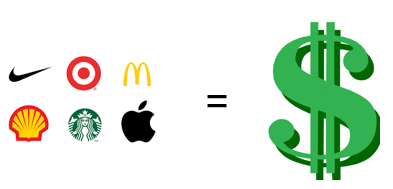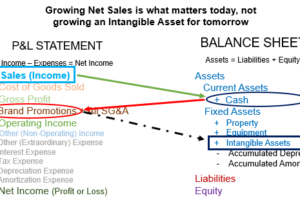
Brand building is the process of creating and shaping a unique identity for a company, product, or service to establish recognition, cultivate a loyal customer base, and differentiate from competitors.
Primary Implication
A brand is not a tangible asset that increases in value on your Balance Sheet, the more you invest in it. Brand building represents an expense that only pays for itself when it leads to increased sales. It is a long-term marketing strategy that rarely earns the return on investment that brand marketers want you to believe.
Rather than invest in a readily recognizable brand you are better served by knowing with precision who buys from you now, how your product and services improved their lives, and when they are likely to need you again. Know this to improve your sales process and align your operations to deliver what your customers expect. This is how you make more money.
Overview
Brand building is a luxury that most small businesses don’t have the deep pockets and time to invest in doing. Yes, a strong brand that is readily recognizable and helps you stand out in a sea of competition is possible, but never cheap.
Think for a moment about the money spent by Ford, Coca-Cola, and McDonald’s to stand out from Dodge, Pepsi, and Burger King. People readily recognize these brands and what they do, yet they don’t drop every and go out to buy their products when they are exposed to their branding.
The issue for small businesses with building a brand is that there is no direct correlation between branding and sales. Every small business needs a name for their business and an associated logo they identify themselves by. Some even may choose to sponsor events locally. What they don’t need is to try and build a company brand that will lead them to stand out in a sea of non-differentiated brands. There are better and more cost-effective actions you can take to generate sales:
- You need to know who benefits most from the products and services you offer. This defines your target customer.
- You need to know what problem your target customer is trying to solve with their purchase from you. This helps you connect the features of your product to the benefits your customers want to acquire.
- Your business needs to be where your target customer wants to transact business. If people are looking for ready accessibility and convenience, then location is everything to your business.
- Promotions must reflect what your customers want, not what you have to sell with a compelling call to action that leads them to you.
- Sales need to help your target customer see how your product and services will help them. Your sales goal should be to help your target customer buy the things they need and want.
Brand building is for businesses with big marketing budgets, and people allocating the money to brand that have big egos. What’s better than branding is mastery of your product and sales formula shaped by your business profit model. Until you have a repeatable business model for producing profits and predictable cash flowing through it, branding can wait.
